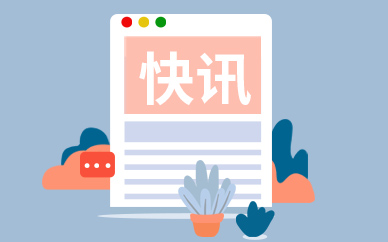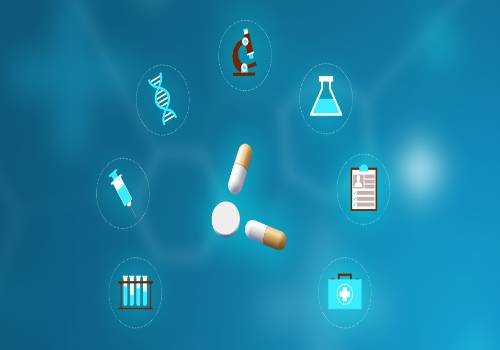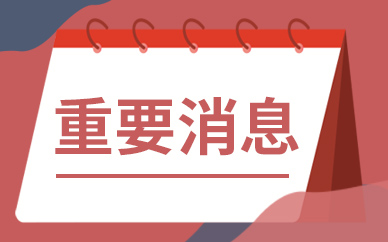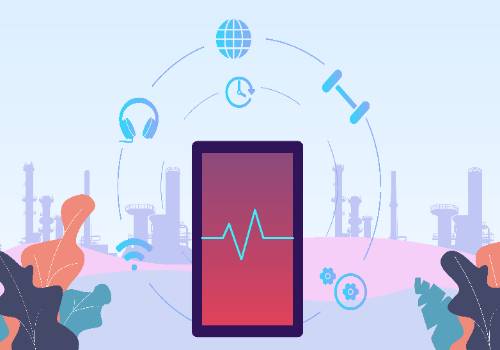BEIJING, June 8 (TiPost) -- There is not a single Huawei employee who doesn"t know "516". It is both the end and the beginning of everything for the company. Since then, Huawei"s time has been divided into two eras: Huawei with only hardware and the Huawei that combines hardware and software.
 (资料图片)
(资料图片)
In 2019, after the US government announced the ban, some overseas vendors who regularly worked at Huawei"s offices immediately withdrew, including consultants for Oracle databases and ERP software, various production tools. The business systems that Huawei had built over the past few decades on top of commercial software were on the brink of collapse.
There has never been a precedent in history for a country to use its power to target a company. Huawei was not known for its software in the past, and even the top software companies did not have the precedent of filling many software gaps with just one company, let alone meeting their own basic needs globally.
The bald eagle hovered in the sky, watching closely. The 200,000 Huawei employees worked at lightning speed, like a well-trained team, to fight a secret battle.
In 2020, Huawei launched the "San Ya Po Battle" with the core objective of maintaining its production and operations and achieving self-reliance. According to TiPost App, the "San Ya Po Battle" mainly includes five levels: hardware (X86->ARM), operating system (Linux/Windows->Euler), database (Oracle->GaussDB), middleware, and application software.
Middle-aged Huawei has embarked on a new software journey. All Huawei employees are holding their breath, determined to prove that Huawei can break through.
The outside world has no way of knowing how much confidence Huawei has. Some Huawei employees are secretly worried because they know how difficult it is to develop underlying hardware and software in the Chinese IT industry. Fortunately, Huawei did not start from scratch, nor did it fight alone. Against the backdrop of promoting independent innovation in China, Huawei has gradually made progress through self-reliance and joint innovation.
Starting from the end of 2022, Huawei has shown that it has alternatives to capital. With the "Wujiang breakout," Huawei has released a total of 11 software and hardware development tools, completely freeing itself from its dependence on Western product development tools. In the face of the supply chain disruption and shutdown of core enterprise operation and management systems, including ERP, Huawei successfully replaced them with its self-developed MetaERP. Combined with the release of GaussDB, Huawei"s first domestically developed software and hardware co-design, full-stack, and self-developed distributed database, Huawei"s software landscape is becoming increasingly complete.
Two "Crazy" Attempts
Starting in the 1990s, Huawei"s old ERP and databases both used Oracle. The old ERP system has fully experienced Huawei"s development process, supporting Huawei"s growth from a local company to a global one, and accompanying multiple business transformations such as IPD, ISC, and IFS, basically meeting Huawei"s development needs.
Before the replacement, the old ERP system covered 170+ countries and regions and 250+ legal entities globally, with massive daily transaction volumes, such as 760,000 sales order lines, 210,000 accounts payable invoice lines, and 15 million accounting entries.
"There were complaints about the business"s settlement speed with Oracle, and Oracle"s unified response was that the product itself was like this, and Oracle wouldn"t customize it for a company. To be honest, before "516," Huawei never thought about replacing it because it was too complicated. There were so many peripheral systems, and many business objects and management units inside the ERP were strongly coupled. Pulling one hair moves the whole body, and everyone is too scared to do it," recalled Liu Zhenyu, the chief technical architect of Huawei MetaERP.
When Huawei decided to replace Oracle with its self-developed ERP, the top priority was to choose a database. The ERP system strongly depends on database capabilities, and Huawei initially chose its Malaysian branch as a pilot. In the case of a small amount of data, Huawei used the open-source PostgreSQL database.
According to the MetaERP team"s plan, with as few changes as possible, they will first slowly accumulate capabilities, polish the product, gradually replace it, do a good job of replacing overseas branches, and then move forward steadily, which is a safe road.
However, Huawei"s senior management directly issued a big order to the MetaERP team, "Don"t focus on foreign countries, first focus on the largest and most complex China region." The business in China accounts for more than 60% of the company"s ERP business volume. Even with sharding and partitioning, the maximum storage capacity of a single open-source database is only in the terabytes, which still cannot solve the problem.
With time constraints and heavy tasks, GaussDB database met MetaERP"s requirements with its absolute hardcore strength. In terms of capacity alone, it can expand from a single database of terabytes to petabytes of data.
After the increase in data volume, the performance and stability of the database are put to the test. For example, on the last day of each quarter, Huawei"s business volume may reach 10 to 15 times the normal level. MetaERP team"s requirements for GaussDB database were to achieve 5 times the performance of Huawei"s ERP system"s historical peak. After joint efforts, GaussDB database achieved 20 times the performance of the historical peak.
When using the old ERP, it took more than 2 hours for Huawei"s asset depreciation engine to run once. After switching to the MetaERP supported by GaussDB, the result was obtained in just two minutes. The business personnel could not believe it. They repeatedly checked the results obtained by the R&D personnel and confirmed the accuracy of the data.
After the launch of MetaERP, not only did efficiency increase significantly, but new imaginative possibilities also opened up, such as intelligent data analysis. Problems that were unthinkable during the Oracle era also began to appear on the MetaERP team"s list of requirements.
In terms of stability, MetaERP and GaussDB database also did something "crazy." In July 2022, one day after Huawei"s self-developed MetaERP went online, a Huawei board member came to the R&D team to offer condolences and asked if they could cut off the main database on-site to test the backup node.
"At the time, it was just a joke. In theory, GaussDB database uses a one-primary-two-backup architecture, which can achieve an RTO (Recovery Time Objective) of 0 and business continuity during switchovers. But to be honest, we never did this when we used Oracle. If something went wrong with the business, it would be troublesome," said Liu Zhenyu.
The MetaERP team hesitantly but resolutely shut down the primary node, with the GaussDB database standby node seamlessly taking over and passing reliability checks. Huawei Cloud"s Database Service Product Manager Su Guangniu explained that during the process of replacing Huawei"s database scenario, Huawei Cloud also conducted extensive availability testing, such as cutting off power to racks and storage rooms, to meet the availability requirements of critical industries.
"GaussDB Database is Ready"
Looking back on 2020, Su Guangniu"s most direct feeling was the tense situation. During the "Sanyapo Battle," Huawei reached a consensus that "even if no one uses GaussDB that we developed, Huawei will solve its own database problems." Despite unfavorable factors such as the pandemic, Huawei"s database team did not reduce investment but instead increased it.
By the end of 2022, GaussDB has been widely used in the financial industry, supporting the core business of state-owned banks such as the Industrial and Commercial Bank of China, China Postal Savings Bank, China Construction Bank, and Agricultural Bank of China. In addition, it has also served key industry companies such as the Shaanxi Provincial Department of Finance, CNOOC, and China National Pipeline.
In Su Guangniu"s words, "GaussDB Database is already ready."
One of the major advantages of GaussDB Database is its joint creation. Internally in Huawei, GaussDB has been used in Huawei Terminal Cloud Services and Huawei Group IT. In the ERP scenario, for example, before optimization, many slow SQL statements in open source databases became slow SQL in GaussDB.
The Huawei GaussDB Database team specifically collected all slow SQL statements in the ERP scenario, ran SQL tests under different conditions all day, collected all changing results, and solved the performance optimization problem by gradually tuning with different executors.
In terms of satisfying high performance in financial core transaction scenarios, Huawei and China Merchants Bank jointly created the Ustore storage engine, which enables the system to maintain stable performance under high concurrency and frequent updates. Compared to other similar products in China, it truly achieves 24/7 non-jitter performance.
In terms of operation and maintenance, as the world"s first AI-Native database, GaussDB can provide a fully intelligent database experience from application development to operation and maintenance. In joint creation with China Postal Savings Bank, the efficiency of fault diagnosis was improved by 5 times.
On June 7, at the 2023 Huawei Global Smart Finance Summit, Huawei Cloud officially launched the first domestically-developed distributed database GaussDB with software-hardware collaboration and full-stack autonomy.
Zhang Ping"an, Executive Director of Huawei and CEO of Huawei Cloud, revealed that GaussDB will continue to focus on financial scenarios in the future. Through comprehensive innovation, it will become a better choice for financial customer databases, and expand from the financial industry to other industries with high requirements for databases, from China"s innovative scenarios to the global customer market, and provide the world with a better choice.
Su Guangniu also mentioned that many domestic financial enterprises still have a large amount of Oracle and MySQL data internally, and they are worried about future use and other issues. Huawei will further optimize its products and use an engineering approach to solve replacement problems without changing or making minimal changes to applications to achieve better economy.
Huawei Cloud, Ascending to the Heights of Software
Why is it difficult to develop basic software such as databases and ERP?
Su Guangniu said that the theoretical foundation of the database has been established, and there will not be a subversive theory that overturns all database products. The difficulty lies in the engineering innovation, such as performance, stability, reliability, etc. The key issues are how long it takes, how much manpower is invested, and whether it can persist. Decision-making and trade-offs are a difficult process.
Liu Zhenyu said that Huawei reviewed and summarized four simple success factors for MetaERP: mastering the principles, breakthrough technology, strict specifications, and exquisite craftsmanship.
The underlying logic of the ERP system is extremely complex. Huawei solved the fundamental problems by returning to the essence of enterprise resource planning. Huawei understands various scenarios and logics such as global business and taxation, and it is difficult for manufacturers without relevant accumulation to do well.
In terms of technological breakthroughs, with the support of Huawei Cloud and other departments such as ProcessIT, some new technologies and requirements for independent innovation can be fully verified and implemented.
Regarding strict specifications, MetaERP has developed a set of standard architecture, technology, and engineering methodologies. According to templates and standard methods, each step is done well and solidly, assembling MetaERP into a seamless whole to create a high-quality product.
In terms of exquisite craftsmanship, the goal is to use the fewest people to do the highest quality work, and to build MetaERP"s implementation engineering capabilities through automated testing, batch switching, and online collaboration.
Basic software is a challenging track with no shortcuts, but there are opportunities to seize. It is now a consensus that traditional IT infrastructure has shifted from On Premise local deployment to Cloud-Based deployment, and then gradually towards Cloud-Native. GaussDB and MetaERP are both based on Cloud-Native distributed architecture.
Sooner or later, we will eventually get rid of the bottleneck situation, and Huawei is moving faster. By promoting industry ecology through hardware openness and software open source, this is also an opportunity and path for Huawei to do software.
At the GaussDB release event, Huawei Cloud announced the "Database Partner Support Program" along with 17 software partners including CEC DXT, Advanced Digital, and Shenzhou Information, and 7 service partners including Yingfa, Palm Cloud, Woqu, Aishu, ChinaSoft, Massive, and Wingtech. For database software partners, service partners, and digital transformation consulting and system integration partners, Huawei Cloud provides 5 categories of benefits, sets up related support plans, and provides rich marketing resources.
The key technology nodes of the information technology industry, such as databases and ERP, are of great importance to Digital China. Databases are above the operating system and below the application layer, and with databases as a handle, a considerable proportion of difficult problems can be solved. In order for China"s basic software to not be "bottlenecked," it should be like Huawei"s GaussDB data, providing "a better choice for the world."
Zhang Ping"an also mentioned that the phrase "give the world a better choice" has another hidden meaning. When Huawei broke through that barrier, it discovered that the combination of China"s application scenarios and root technology can definitely become another better choice in the world. It"s just that people aren"t doing it right now.
He also said, "We have no interest in all mid-range, low-end, and small-capacity databases. There are many domestic database manufacturers that can meet these needs. But as long as it is a challenging scenario, we are willing to be the first ones to take it on. This is the positioning of our database. Even if it may just be a tiny bit at the top of the tower, and the revenue and profits it brings are not great, we are still willing to do it."
In the process of Huawei"s software breakthrough, cloud computing is a crucial variable, and this is also the opportunity that the times have given to Huawei. Overseas vendors such as AWS and Microsoft are also using the cloud to reconstruct IT software and hardware, and are attacking the old IT system. Oracle itself is also moving towards cloud computing. Through cloud computing, Huawei can move its starting line forward as much as possible and stand at the forefront of the technological industry trend.
When discussing great companies in the 21st century, most of them are overseas companies, with software companies dominating the discussion. However, when Huawei, forced by external forces, became a company that excels in both software and hardware, it should be included in the discussion of great companies. Huawei"s self-developed software not only satisfies its own development needs, but also to a certain extent solves the worries of "thousands of Huaweis" in China.
On the one hand, it is incredible that a giant company can change its course and build software, which it was not good at before, to ensure its own production and operation continuity more than 30 years after its establishment. On the other hand, through cloud computing, Huawei is exporting its full-stack software and hardware capabilities, which has unique significance in the established trend of independent innovation in digital China.
And Huawei Cloud, as the output of its software strategy, outlines the vision of basic software, and is perhaps another opportunity to recreate Huawei.














































































